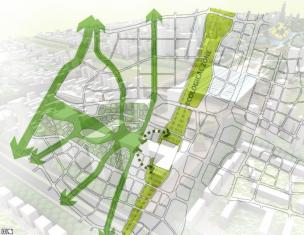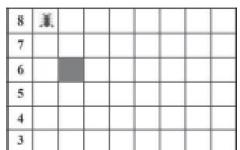A career in a sport such as figure skating, as well as being overweight, are categorically incompatible concepts. At the same time, this sport forces you to spend a significant amount of energy, so athletes’ nutrition simply must be balanced and nutritious. That is why a specific dietary system, called the figure skater diet.
The correct dietary system for figure skaters
Trainers who work with figure skaters are confident that the appearance of extra pounds is caused solely by improper distribution of nutrients in the diet. The fact is that figure skating requires from those who practice it not only great endurance, but also well-developed muscles. At the same time, flexibility must be present. Endurance is simply unthinkable without a sufficient supply of carbohydrates; figure skaters get them by eating fruits and vegetables, as well as cereals and pasta based on durum wheat. An indicator such as muscle strength most directly depends on the intake of protein from food. By the way, the optimal sources of these should be considered all lean types of fish, as well as meat and poultry, as well as low-fat fermented milk and dairy products. Flexibility in the body can be effectively maintained through a liquid diet. Since all skaters put themselves at risk of falling during any training, and this, in turn, can cause fractures or sprains, they now and then have to enrich their diet with foods that contain calcium. By the way, this element not only significantly strengthens bone tissue, but also stimulates the conduction of all nerve impulses. The main sources of calcium are all kinds of dairy products and some types of nuts.
Diet for figure skaters - the right system
Diet is also of great importance. So, all skaters eat fairly small portions, but quite often. Coaches really insist that their players eat at least a couple of hours before the start of training. Then the digestion process will not interfere with their full activities. These are general guidelines only. In fact, for each specific athlete, the diet and nutrition regimen are compiled individually, then factors such as gender and age, as well as the direction of their training process, are taken into account as much as possible.
Extreme variation of the dietary system
Diet for figure skaters - sample menu
In addition to the main one, there is also an extreme version of this diet. It allows you to adjust your weight immediately before performances. This is a quick diet that is designed for good results. Most likely, it does not cause much delight either among coaches, or among professional athletes themselves, and, especially, among nutritionists. But its effectiveness in terms of weight loss is beyond any doubt.
Menu for this diet
After waking up, you should drink a glass of still water, mineral water
Breakfast consists of 1/2 cup bran. Can be consumed pure or with kelp. You should also drink 500 grams of unsweetened green tea
Second breakfast consists of a couple of green apples
Lunch includes 2 rye crackers with a glass of low-fat kefir
The snack consists of a large orange and 100 grams of low-fat cottage cheese
For an afternoon snack, you can eat 4 grains, preferably buckwheat, and drink 1 glass of unsweetened black tea
The snack consists of low-fat cottage cheese, the portion of which should not exceed 100 grams
Dinner should include boiled beef or white poultry. The volume of meat is 100 grams. To make the diet easier, the next day you can replace it with 2 boiled eggs
Diet for skaters - menu
The duration of such a diet should not be more than two to three weeks. Weight loss in this case is approximately 15-20 kilograms.
Diet for figure skaters - results
The diet of figure skaters in its first version does not cause any particular complaints, which definitely cannot be said about the extreme version of it, because it provokes excessively rapid weight loss. A quick result is not always good.
How not to fail on a diet - video
Figure skating competitions convince us that this sport imposes very special requirements on the diet. Agree, the skater with overweight is unlikely to be able to cope with complex somersaults. At the same time, it is absolutely impossible to withstand crazy loads without proper recharge. Let's find out what the skaters' diet is, and also find out whether its recommendations are useful to the general mass of people.
Figure skaters diet
Famous coaches are sure that excess weight in athletes is not due to plenty of food, but due to improper distribution of nutrients. For example, endurance training requires the consumption of carbohydrate foods, while muscle building requires protein foods. But intensive exercises to develop flexibility are unthinkable without a liquid diet.
Figure skating is a kind of combination of the above training. Athletes should consume complex carbohydrates. They can be obtained from cereals, pasta and fruits (such as bananas). Protein food for skaters is also extremely important. The diet should contain low-fat varieties meat, as well as fish, dairy products and eggs. This sport requires large quantity technical work, and therefore, it is worth introducing calcium into the menu - it strengthens bone tissue and enhances the conduction of nerve impulses to the muscles. This element is found in nuts and dairy products.
Diet plays a huge role. An athlete should eat a couple of hours before training and no later, otherwise the digestion process will take away some of the energy, preventing him from reaching his full potential. It is also extremely important to ensure that there are no late meals (it is better to have dinner 2-3 hours before bedtime, so that the food has time to digest).
The nutrition of figure skaters largely depends on the period of training, age, physical data, as well as on the focus of the training process. The diet of skaters, therefore, is always compiled individually.
How do famous figure skaters lose weight?
Not always figure skaters manage to maintain balance and this pushes them to use variety of diets. We invite you to find out how our idols lose weight.
The famous Olympic champion Alexey Yagudin quite often resorts to. The athlete offers us the following menu:
- Breakfast: grated apple mixed with 200 ml low-fat yogurt and 1 tbsp. oatmeal
- Second breakfast: big green apple
- Lunch: apple and lettuce salad, dressed olive oil and slightly diluted apple cider vinegar
- Afternoon snack: big green apple
- Dinner: apple, sliced and drizzled lemon juice, as well as a piece of low-fat hard cheese
If you feel a strong feeling of hunger, it is not forbidden to snack on a baked apple.
In addition to this diet, you can practice fasting days on apples (1.5 kg): 2 times a week if you need to lose weight or 2 times a month if you just want to maintain your weight at the desired level.
Evgeni Plushenko prefers to eat as varied as possible, cutting down only on the size of portions. And here is the winner Olympic Games Irina Slutskaya, in emergency cases, leans only on cabbage and apples. If she just has to compete, then Irina switches to a diet that includes lean porridge, as well as vegetable and fruit salads.
As you can see, figure skaters are not much different from us mere mortals. They also watch their diet and follow a variety of diets.
In the 2007/2008 season. we carried out research on the analysis of the actual nutrition of young athletes on the basis of the St. Petersburg Youth Sports School of the Olympic Reserve in Figure Skating. Data on actual nutrition were collected based on the nutrition diaries completed by the athletes. To calculate the parameters of the chemical composition we used computer program“Organization of nutrition in youth sports schools and educational institutions”, developed at St. Petersburg Research Institute of Physical Culture on the basis of tables on the chemical composition of food products and ready-made dishes.
The hygienic characteristics of nutrition were carried out in comparison with the currently existing recommended values for the consumption of basic nutrients and energy for young athletes (Order No. 155 of February 25, 2004 “On the standards for providing a minimum daily diet for students of Olympic reserve schools”). In table 30, 31 and 32 show the correspondence of the actual content of nutrients and energy to the recommended values.
Table 30 Correspondence of the content of nutrients and energy value of the daily diet of young skaters to the recommended values (%)
As follows from the table, young skaters' energy needs are satisfied with food by 50.3-63%, in - by 42.3-62.3%, in - by 63-85.2%, in - by 44-49 ,1%.
A lack of basic nutrients (,) and energy in the diet inevitably leads to a deficiency of such essential food components as, and (see Tables 31 and 32), which in our study was confirmed by biochemical research data.
Table 31 Provision of vitamins in the daily diet of young figure skaters in comparison with the recommendations of St. Petersburg Research Institute of Physics (%)
|
Pair skating (m) | |||||||
|
Pair skating (w) | |||||||
|
Single skating (m) | |||||||
|
Single skating (w) |
Table 32 Provision of minerals in the daily diet of young skaters in comparison with the recommendations of St. Petersburg Research Institute of Physics (%)
|
Study groups of athletes | |||||
|
Pair skating (m) | |||||
|
Pair skating (w) | |||||
|
Single skating (m) | |||||
|
Single skating (w) |
When comparing the vitamin composition of the diet with the recommended intake values, an insufficient content of all the studied vitamins, including PUFAs, was revealed in the figure skaters’ diet.
A study of the mineral composition of food revealed a deficiency in nutrition of all the studied mineral substances.
Based on the totality of the studies conducted, typical errors found in the diet of figure skaters were identified:
- reduction in the energy value of the daily diet;
- insufficient content of total carbohydrates with a violation of the structure of their consumption (excess - and);
- insufficient content of proteins of both plant and animal origin in the diet;
- insufficient consumption of animal and plant fats;
- insufficient content .
and as a consequence:
- insufficient intake of vitamins (vitamin A, B1, B2, C, etc.);
- deficiency of macro- and microelements (calcium, phosphorus, magnesium, iron, etc.).
Based on the totality of the studied indicators, we concluded that insufficient is determined in all skaters, regardless of the chosen type of figure skating.
Algorithm for compiling diets for figure skaters
The main goal of creating diets for athletes is to achieve maximum compliance between the possible influence of the diet on the body of a young athlete and the tasks set by the coach for a given period of the training process.
- Calculation of daily averages in order to determine the energy value of the diet.
- Determination of the ratio of basic nutrients in accordance with a specific pedagogical task for a specific period of training of an athlete. To do this, it is necessary to know the structure of training microcycles (MCs) in the annual cycle of training athletes, pedagogical tasks for individual microcycles, and duration. Each day of the microcycle must correspond to a specific diet.
- Compiling a set of products that provides the calculated calorie content of the diet and the ratio of nutrients in it. To fulfill this condition, it is recommended to be guided by the approximate sets of products developed by St. Petersburg Research Institute of Physical Culture (Order No. 155 of February 25, 2004 “On the standards for providing a minimum daily diet for students of Olympic reserve schools”), or Appendix 9.
- Creation of a technological card index of ready-made dishes (layout cards).
- Compiling a diet from a card index of layout cards with its distribution throughout the day (4-5 meals are recommended) depending on the time and number of training sessions.
An example of compiling a ten-day menu of four meals a day for a training camp (ration ShSh-2) is given in Appendix 14.
General nutritional principles for weight loss for figure skaters
In our opinion, one of the reasons typical mistakes, found in the diet of skaters, is the restriction of food consumption associated with the fear of gaining excess weight. This is especially true for girls and young women. We have already written that any lack of energy, proteins, fats and carbohydrates in the diet inevitably leads to a deficiency of such essential food components as PUFAs, vitamins and minerals, which ultimately leads to decreased immunity, injuries, increased morbidity and decreased athletic performance. Therefore, when a young figure skater or figure skater is faced with the task of reducing body weight or maintaining the recommended one, we must correctly formulate a diet so that, with a reduced caloric content, the food contains an adequate amount of all essential food components, and the athlete can maintain the achieved level of physical fitness throughout this period.
Nutrition principles for weight loss:
- Gradually reduce the energy value of the diet, but not below the energy consumption for basal metabolism (1200 kcal).
- Increase the protein quota in the diet to 18-20% of the daily calorie intake (but not more than 3 g/kg body weight).
- As full source Use protein: beef and chicken without visible fat, low-fat fish (cod, pike, navaga, pike perch), rabbit, veal, low-fat cottage cheese, eggs. Combine meat with raw vegetables and leafy greens.
- Limit the fat quota to 26-30% of the daily calorie intake from animal fat.
- Eliminate or limit animal fat from your diet ( butter, cream, sour cream, offal, lard, sausages).
- Increase the consumption of vegetable fats (up to 20-25 g per day). They are recommended for use in salad dressings and vinaigrettes, but not for frying foods.
- Maintain a carbohydrate quota of up to 50-56% of the daily caloric intake while limiting high carbohydrates (sugar, sweets, confectionery, premium flour products, potatoes, white rice, corn flakes).
- Increase the consumption of fruits and berries containing carbohydrates with a low glycemic index: apples, grapefruits, oranges, peaches, plums, lemons, currants, gooseberries, cranberries, and juices from them.
- Maintain the frequency of meals - at least 4-5 times a day.
- The main food consumption should be in the morning and afternoon (at breakfast and lunch - 2/3 of the total daily calorie intake, at dinner - 1/3, respectively).
- It is recommended that the evening meal consist mainly of protein products (lactic acid, lean meats, eggs, seafood).
- The time between dinner and the start of bed should be at least 3 hours.
- Limit foods that stimulate appetite (overeating) in your diet: strong broths, pickles, marinades, smoked foods, fried foods, spicy seasonings, alcohol.
- To prevent overeating, you need to eat slowly, chewing your food thoroughly.
- The use of diets with limited energy intake (hypocaloric nutrition).
For an approximate weekly hypocaloric diet aimed at reducing the body weight of figure skaters, see Appendix 15. This diet is prescribed for no more than 1 month.
As an alternative to diets with limited energy intake, fasting days can be used. Most of them are inferior in energy value and chemical composition, so they are prescribed for 1-2 days and no more than 1-2 times a week.
Methodology for conducting contrast, or fasting, days
Contrast, or fasting, days are carried out with the aim of restructuring metabolism and stimulating the mobilization and use of energy resources from fat depots, which leads to weight loss. Increased diuresis and improved bowel movements these days lead to a more or less significant decrease in body weight and contribute to the removal of metabolic end products from the body.
A fasting diet is usually prescribed on a day off. Meals are taken 5-6 times a day. To avoid irritation of the food center, you should not eat at a common table. On this day, it is advisable to ensure physical rest - excessive physical stress is unacceptable. Light to moderate housework is permitted. It is advisable to plan your daily routine in advance, including spending time in the fresh air.
If you feel hungry, accompanied by severe weakness and dizziness, it is recommended to drink tea with sugar, jam or honey.
When choosing a menu for a contrasting day, you should be guided by your personal tolerance to the offered food products diet and individual taste. At the initial stage, preference should be given to diets with the highest energy value (higher calorie content) - meat, fish, cottage cheese. In the future, other types of diets (fruit and vegetable, dairy) or double fasting days can be used: for example, first a meat day is prescribed, and then an apple day (Appendix 16).
One of the methods that helps to correct and maintain the recommended body weight is changing eating behavior, i.e. developing the habit of eating right.
Appendix 14 Approximate ten-day menu of four meals a day for a training camp for figure skaters
Day 1, menu
|
Name of dish |
Weight of the finished dish, g |
Chemical composition |
|||
|
Proteins, g |
Fats, g |
Carbohydrates, g |
Calorie content, kcal |
||
|
BREAKFAST |
|||||
|
Tea with sugar and lemon | |||||
|
Hercules milk porridge | |||||
|
Natural two-egg omelette | |||||
|
Butter bun | |||||
|
Fruits (peaches) | |||||
|
TOTAL | |||||
|
DINNER |
|||||
|
Assorted vegetables | |||||
|
Olivier salad | |||||
|
Chicken soup with vermicelli | |||||
|
Mashed potatoes | |||||
|
Fruits (pears) | |||||
|
TOTAL | |||||
|
AFTERNOON SNACK |
|||||
|
Curd cheese | |||||
|
Blend "Tropical" | |||||
|
TOTAL | |||||
|
DINNER |
|||||
|
Tea with sugar and lemon | |||||
|
Grated carrots with sugar | |||||
|
Crumbled buckwheat porridge | |||||
|
Fruits (apples) | |||||
|
Bee honey | |||||
|
TOTAL | |||||
Food set No. 1 (calorie content - 3500 kcal)
|
No. |
Products |
Product quantity (net, g) |
|
Meat products (cooked, semi-smoked, hard-smoked, pork-smoked sausages): sausages | ||
|
Egg (dietary) | ||
|
Vegetable oil (sunflower, corn, etc.) | ||
|
Milk (whole) | ||
|
Dairy products: | ||
|
cottage cheese n/w | ||
|
Potato | ||
|
Cereals, flour: Hercules flakes | ||
|
vermicelli | ||
|
onion/leek | ||
|
parsley dill | ||
|
fresh/salted cucumbers | ||
|
peas (canned) | ||
|
Fresh fruits (berries, citrus fruits assorted): | ||
|
Canned fruits | ||
|
Dried fruits (dried apricots, raisins, prunes) | ||
|
Nuts (walnuts, almonds, cashews, hazelnuts) | ||
|
Jam, jam, marmalade: jam | ||
|
Rye/wheat bread | ||
Day 2, menu
|
Name of dish |
ready dish, g |
Chemical composition |
|||
|
Carbohydrates, g |
Calorie content, kcal |
||||
|
BREAKFAST |
|||||
|
Tea with sugar and lemon | |||||
|
Rice porridge milk | |||||
|
Sausage sandwich s/c | |||||
|
Pancakes with cottage cheese | |||||
|
Condensed milk | |||||
|
Fruits (apples) | |||||
|
TOTAL | |||||
|
DINNER |
|||||
|
Assorted vegetables | |||||
|
Fresh cabbage with herbs | |||||
|
Bean soup with m/k broth | |||||
|
Meatloaf, minced meat. egg | |||||
|
Crumbled buckwheat porridge | |||||
|
Fruit compote | |||||
|
Fruits (nectarines) | |||||
|
TOTAL | |||||
|
AFTERNOON SNACK |
|||||
|
Blend "Tropical" | |||||
|
Baking with honey | |||||
|
TOTAL | |||||
|
DINNER |
|||||
|
Tea with sugar and lemon | |||||
|
Mashed potatoes | |||||
|
Squash Cavier | |||||
|
Corn (canned) | |||||
|
Fruits (pears) | |||||
|
TOTAL | |||||
Food set No. 2 (calorie content - 3500 kcal)
|
Products |
Product quantity (net, g) |
|
|
Meat (veal, 1st grade beef tenderloin, pork, lamb) | ||
|
By-products (beef): tongue, liver, kidneys | ||
|
Meat products (cooked, semi-smoked, hard-smoked, pork-smoked sausages): semi-smoked sausage | ||
|
Fish and fish products (fresh, frozen, salted fish) | ||
|
Poultry (chickens, turkey, chicks) | ||
|
Egg (dietary) | ||
|
Butter, including ghee | ||
|
Milk (whole) | ||
|
Dairy products: | ||
|
cottage cheese n/w | ||
|
condensed milk | ||
|
Potato | ||
|
Fresh vegetables, legumes, herbs (assorted): | ||
|
squash Cavier | ||
|
onion/leek | ||
|
parsley dill | ||
|
fresh cucumbers | ||
|
corn (canned) | ||
|
used cabbage | ||
|
nectarines | ||
|
Canned fruits | ||
|
Fruit juices/mineral water | ||
|
Sugar, candies, marmalade, halva: sugar | ||
|
Jam, jam, marmalade | ||
|
Flour confectionery products (cookies, biscuits, gingerbread, etc.): baked goods | ||
|
Rye/wheat bread | ||
Day 3, menu
|
Name of dish |
Weight of the finished dish, g |
Chemical composition |
|||
|
Carbohydrates, g |
Calorie content, kcal |
||||
|
BREAKFAST |
|||||
|
Cocoa with milk | |||||
|
Buckwheat milk porridge | |||||
|
A cheese sandwich | |||||
|
Boiled egg | |||||
|
Bun with jam | |||||
|
"Fruits (pears) | |||||
|
TOTAL | |||||
|
DINNER |
|||||
|
Vinaigrette with fish (canned) | |||||
|
Fresh cabbage with herbs | |||||
|
Pickle soup for chickens. broth | |||||
|
Navy pasta | |||||
|
Compote from St. apples | |||||
|
Fruit (kiwi) | |||||
|
TOTAL | |||||
|
AFTERNOON SNACK |
|||||
|
Almonds in yogurt | |||||
|
Baking with chocolate | |||||
|
TOTAL | |||||
|
DINNER |
|||||
|
Tea with sugar and lemon | |||||
|
Rice balls | |||||
|
Korean carrots | |||||
|
Olivier salad | |||||
|
Fruits (apples) | |||||
|
TOTAL | |||||
Food set No. 3 (calorie content - 3500 kcal)
|
Products |
Product quantity (net, g) |
|
|
Meat (veal, 1st grade beef tenderloin, pork, lamb) | ||
|
By-products (beef): tongue, liver, kidneys | ||
|
Meat products (cooked, semi-smoked, hard-smoked, pork-smoked sausages) | ||
|
Fish and fish products (fresh fish, frozen fish, canned fish) | ||
|
Poultry (chickens, turkey, chicks) | ||
|
Egg (dietary) | ||
|
Butter, including ghee | ||
|
Vegetable oil (sunflower, olive, corn, etc.) | ||
|
Milk (whole) | ||
|
Dairy products: | ||
|
cottage cheese n/w | ||
|
condensed milk | ||
|
Potato | ||
|
pasta | ||
|
pearl barley | ||
|
Fresh vegetables, legumes, herbs (assorted): | ||
|
onion/leek | ||
|
parsley dill | ||
|
pickles | ||
|
peas (canned) | ||
|
used cabbage | ||
|
Fresh fruits (berries, citrus fruits assorted): | ||
|
Canned fruits | ||
|
Dried fruits (dried apricots, raisins, prunes) | ||
|
Fruit juices/mineral water | ||
|
Nuts (walnuts, almonds, cashews, hazelnuts) | ||
|
Sugar, candies, marmalade, halva: sugar | ||
|
Jam, jam, marmalade | ||
|
Flour confectionery products (cookies, biscuits, gingerbread, etc.): baked goods | ||
|
Rye/wheat bread | ||
Day 4, menu
|
Name of dish |
Weight of the finished dish, g |
Chemical composition |
|||
|
Carbohydrates, g |
Calorie content, kcal |
||||
|
BREAKFAST |
|||||
|
Tea with sugar and lemon | |||||
|
Millet milk porridge | |||||
An athlete spends several times more energy than an ordinary person.
Therefore, he must monitor his diet, eat properly and in calories. This also applies to figure skaters, especially at a young age. A child who goes to figure skating training must eat not only high-calorie meals, but also in a timely manner. Nutrition for figure skaters is based on two principles: the first is fractional meals, the second is that the diet must include liquid hot food (first courses).
Skater nutrition rules
Food is a source of energy and fuel for the body.
Young skaters should eat small meals at least every 3-4 hours. It is mandatory to eat 1-1.5 hours before classes, but not before training.
We should not forget about snacks; they should contain as many carbohydrates as possible and as little protein and fat as possible. This could include fruit, cheese sandwiches and yogurt.
Proper nutrition for figure skaters:
- Activates metabolic processes.
- Normalizes weight.
- Promotes muscle growth.
- Provides the body with a sufficient amount of vitamins and beneficial microelements.
Diet requirements for figure skaters
If you enroll your child in, be sure to consult with a coach about the diet and take into account the general principles: the daily requirement of boys 6-12 years old is 2000-2500 calories, girls - 1800-2200 calories.
Squirrels. It is important that the skater’s diet provides the body with the required amount of animal proteins - they are needed for the synthesis of tissues in a growing child’s body. Most of them contain:
- Beans and soybeans.
- Peas and beans.
- Cottage cheese and cottage cheese.
- Fish and meat.
Carbohydrates. Another mandatory component of a skater’s diet is carbohydrates. This is a source of energy for muscles; they are intensively consumed during training. Therefore, foods rich in carbohydrates should be present at every meal. Complex carbohydrates are best absorbed - cereals, pasta, bread.
It is important that the skater maintains a drinking regime. You need to drink as much fluid as possible; it will protect you from dehydration and overheating. In addition, you need to take into account the time it takes to digest a particular product. For example, if the menu includes fried meat and boiled eggs, you need to have lunch no later than 3-4 hours before the competition. Nutrition for figure skaters should be determined taking into account the intensity of training and the individual characteristics of the athlete.
It is impossible to achieve success in figure skating if you are overweight. But the specifics of this sport require a huge amount of energy, so a balanced and good nutrition necessary for athletes.
How do figure skaters eat? Do they have a special diet and what does it include?
Organization of figure skaters' diet
According to trainers working with figure skaters, extra pounds appear due to improper distribution of nutrients. A skater must not only be physically tough and have well-developed muscles, but also be flexible and flexible.Skaters get carbohydrates for endurance from fruits, vegetables, cereals and pasta from durum wheat. Proteins give strength to muscles. They are found in lean varieties of fish, meat and poultry, low-fat fermented milk and dairy products. A liquid diet maintains the flexibility of the body, and foods high in calcium strengthen bone tissue and stimulate the conduction of nerve impulses. Therefore, soups, nuts and dairy products must be included in the diet of athletes.
The composition of the diet and its quantity are certainly important. But eating regimen is no less important. Skaters eat often, but in small portions, and at the request of coaches, lunch should be two hours before the start of training, so that digestion does not interfere with classes. For each athlete, the diet is compiled individually, taking into account gender, age, direction of the training process and other factors.
And yet there are cases when, before a performance, an athlete’s weight exceeds the permissible values. In this case, an extreme diet is used, which, of course, is not approved by either trainers or professional nutritionists. However, it is very effective.
Getting out of bed after sleep, you need to drink 250 ml of mineral water. It should be without gas.
For breakfast you are allowed to eat two glasses of pure bran. You can add kelp to them. Drink 500 ml of green tea without sugar.
The second breakfast menu consists of only two green apples.
Lunch consists of two rye crackers, 250 ml of kefir, low-fat only.
Before afternoon snack, you can snack on a large orange and 100 grams of low-fat cottage cheese.
The afternoon snack menu consists of four grain breads (preferably buckwheat), 250 ml of black tea without sugar.
Before dinner, you can have a snack with 100 grams of low-fat cottage cheese.
Dinner can consist of 100 grams of boiled beef or white poultry or two boiled eggs.
In two to three weeks of such a diet you can get rid of 15-20 kilograms excess weight, but losing it quickly can have a negative impact on your health, so it’s better to be prudent and lose weight gradually.









